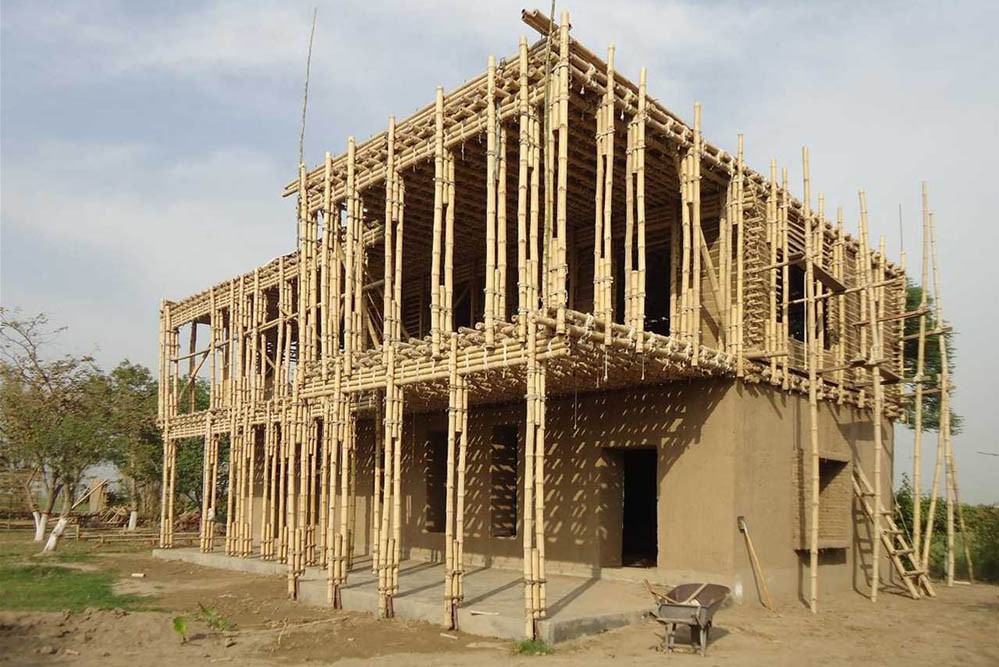
Projects designed on principles of sustainability are either personal residences of architects or those meant for special clients. The idea must be popularised if it has to achieve its full effect on the city

Marx had warned against Capitalism’s inclination towards destroying human beings and nature. It has taken us two centuries of industrialised overconsumption plaguing the world to finally observe and acknowledge visible threats to our survival on the planet. Still, however frightening our condition might appear to be, it has not prevented us from using this as an opportunity to sell more shiny, high-end products in the name of sustainability.
Enter sustainable or green architecture, a method of designing and constructing a building with environment in mind. ‘Green architects’ generally work with the key concepts of creating an energy efficient, environmentally friendly building. Though, the fact remains that sustainable living is something that only the privileged few can afford.
The inherent hypocrisy of sustainability in a capitalist society is lost on many who claim to be a part of the green revolution. The construction industry is a huge part of the consumption cycle. In Pakistan and around the world, more than half of the energy produced is consumed in running our buildings. This ‘half,’ of course, does not include the energy that is utilised in the very process of the construction of the buildings -- i.e. the energy used in the extraction, refining and purification, fabrication and transportation of the required materials. The idea that a building can be termed sustainable, after having consumed so much needless energy, just by utilising heat absorbent glass and rooftop solar panels is laughable indeed.
Some architects in Pakistan have paid heed to the issue most seriously, and made efforts to set precedence with their ideas on sustainability in design and construction. While most designs are limited to post construction energy efficiency aimed at lowering the use of energy in the running of the buildings, there are architects who come to the fore to challenge the development paradigm currently in vogue in the country.
Noted architect Dr Shakeel Qureshi’s design of his personal residence in Model Town, Lahore, is a good example of post construction energy efficiency. Dr Qureshi manipulates the sun angles and uses earth tubes and rooftop gardens in his design to keep his house thermally comfortable throughout the year.
Air, blown by a single fan, reaches the usable spaces of the house after circulating in earth tubes 10 feet below the ground where the temperature remains at a constant 20 degrees centigrade throughout the year. During the monsoon season, the moisture in the air is condensed on the cold water pipes running in the earth tube.
According to Dr Qureshi, the efficient structure of his house endures the load of the rooftop gardens over its 9-inch thick brick walls and 3-inch thick Reinforced Concrete waffle slabs having only 9-inch ribs.
The sustainability issue isn’t settled with just low, post construction energy consumption of a building. The idea is that sustainability should carry the baggage of social, political and economic challenges tied to our growth. That’s why architects have gone beyond designing mere passive thermal comfort systems and ventured into redefining the development paradigms.
Architect Kamil Khan Mumtaz bases his designs on traditional design principles, and uses local materials and labour-intensive techniques in construction. He explains: "A sustainable economy would fully recycle all that it consumes, while sustainable cities would be structurally integrated with the regions from which they derive their basic sustenance."
Using clay and mortar in place of steel, aluminum, cement, and glass spares the planet. There is no pollution, no need to import materials and, hence, no destruction of the environment.
Mumtaz’s argument is that the use of locally available materials and traditional techniques which are labour-intensive contribute to the growth of the region where construction is taking place.
The traditional design principles incorporate passive systems for thermal comfort since they were devised in the times when there were no mechanical means of cooling and heating. This renders many high-tech devices imported from distant lands useless.
German architect Eike Rozwag’s design of the Earthen School Tipu Sultan Merkez, in Sheikhupura, also emphasises the use of local materials. What is different is that he has attempted to upgrade the traditional way of cob (clay, sand, water, and straw) construction. The method, even after the upgrade, still uses locally sourced materials and is low-tech so that it becomes a precedent for others to follow easily. The structure has a cob lower floor combined with an upper floor made of earth-filled bamboo walls. The building has an increased maintenance interval which resolves an energy consuming problem with cob structures.
According to a report by World Bank, "Pakistan’s urban air pollution is amongst the most severe in the world, and it engenders significant damage to human health and the economy." Also, German Watch, a German think tank, has ranked Pakistan as the 7th most vulnerable to climate change.
With the extreme energy crisis, urban air pollution, and our vulnerability in this international climate change crisis, it is high time that we took the concerns and works of these senior practitioners on sustainability seriously. In our urban setups, the idea of sustainability for many hasn’t gone beyond the installation of solar panels which too are imported from long distances and are very high-maintenance.
The projects designed on principles of sustainability in Pakistan are either personal residences of the architects or those meant for special clients. But the debate needs to be popularised among the masses so as to have an actual impact on our city.